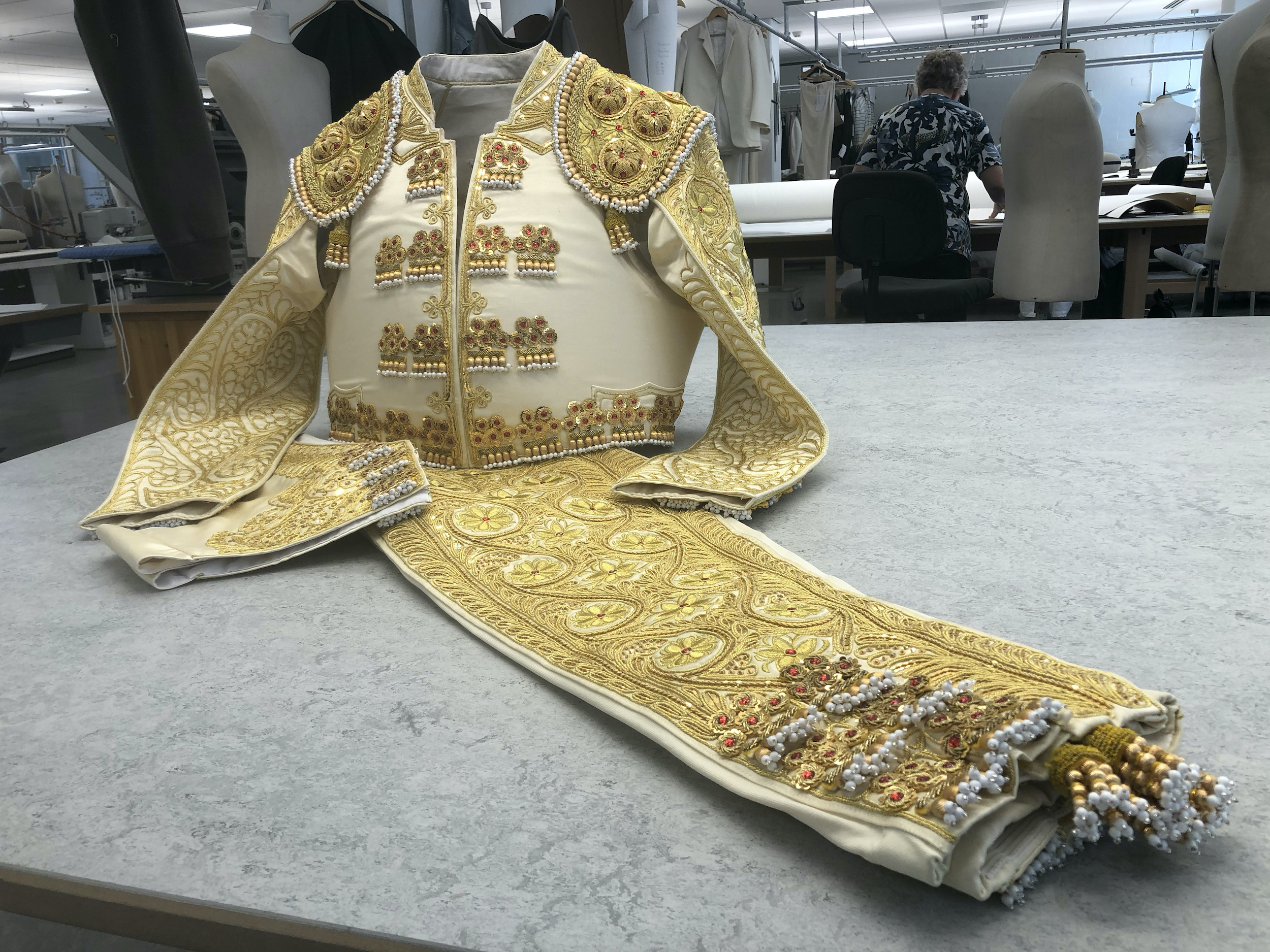
Behind the scenes: the matador costume
In 2009, the creative team for Georges Bizet’s Carmen was given the challenge to turn the stage into a realistic bullfighting arena. That’s why costume designer Falk Bauer instructed Dutch National Opera’s costume department to have original costumes made in Spain. They ordered two identical costumes for the role of Escamillo.
Author: Lune Visser
Jan-Willem Porringa, head of DNO’s men’s costume workroom, pulls the costume from a striped garment bag. It’s a beauty: the lavish gold detailing, intricate patterns and traditional craftmanship make it an eye-catching piece. “As soon as a singer puts on this costume, he becomes the matador. His Spanish, masculine allure is undeniable and there’s no doubt: this is a true bullfighter. That’s exactly what the costume designer was after,” explains Jan-Willem.
HARNESS
It’s not just the details that show that the costume belongs to an imposing matador; the rigid top part tells you what the actual purpose of the costume is: “The costume is designed to protect the matador’s body from the bull. That’s why the jacket is extremely rigid: it’s a kind of harness that’s difficult to penetrate, even by the horns of a bull. The sleeves are loosely attached to the upper shoulder to allow the free and unimpeded movement of the arms. The bottom part is completely different: the tights are so close-fitting that they have to be secured with a cord first before the buttons can be closed.”

MADE TO MEASURE
How will this work in September, when a new soloist will take on the role of Escamillo in the reprisal of Carmen? “It’s impossible to find someone with the exact same measurements. The costume is tailored exactly to size; it won’t fit the new Escamillo, even if his leg measurements are only slightly different. So we had to place a new order with the tailor in Spain for exactly the same costumes, but with different measurements. When you reprise a production, it has to look exactly the same as the first time it was performed. You can’t just change things the second time around.”
LESS IS A BORE
“While some people say that ‘less is more’, in the theatre we go by ‘the more the better’: a little gold won’t do, we need the whole suit to be brimming with gold. That makes it sparkle. Of course, it’s only the soloist that gets to be decked out in gold. The colours of the other matador costumes are light blue, green or purple.”
WOUNDED
The gold costume does have some red hues later on in the performance, however. After he’s been wounded and he’s covered in blood, Escamillo needs another suit. This suit has been through the dye shop to make it look all bloody. Rosalinda Lourens, senior dyer, had the honour of working on the costume in 2009. “Before I start the dyeing process, I do some serious research: I ask the director a number of questions. What happened? Was he caught by the horns of a bull? Was he attacked from behind as well? The cause of the so-called wound tells me where to put the red dye on the garment.”
BLOODY JOB
How does the process work? “I start with a small speck and I go from there. In 2009, we didn’t have the materials for fake blood that we have now, so at the time I just used red fabric dye with extra shine. The trick is to make the stains bigger and bigger so that they connect. I look in on rehearsals to see whether it seems realistic. I can always add blood; at that point, it’s too late to remove it.”